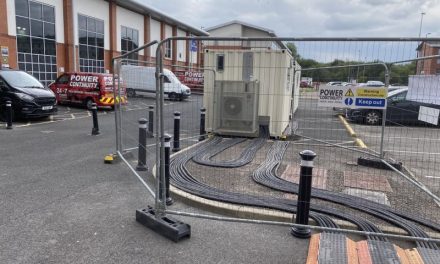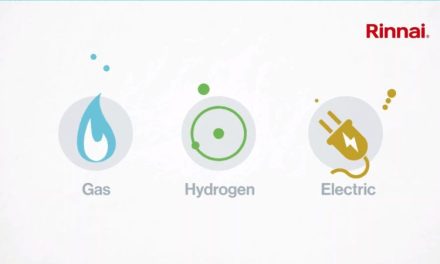 Pražská Teplárenská is a utility company that operates a district heating system in Prague, the capitol of the Czech Republic. The network has 265,000 customer connections, 49 heating plants and if it were laid out end to end it would be 696km long, reaching all the way to Switzerland. Most utility operators have some legacy infrastructure that was never designed or built to support remote monitoring and control. Thermal energy distributors tend to have a bit more of it than most.
Pražská Teplárenská is a utility company that operates a district heating system in Prague, the capitol of the Czech Republic. The network has 265,000 customer connections, 49 heating plants and if it were laid out end to end it would be 696km long, reaching all the way to Switzerland. Most utility operators have some legacy infrastructure that was never designed or built to support remote monitoring and control. Thermal energy distributors tend to have a bit more of it than most.
Goal: Improve Network and System Efficiency with Wireless Connectivity and Communication Technology
Pražská Teplárenská needed a way to deploy remote supervisory control and data acquisition (SCADA) throughout the system. Remote monitoring and control of the boiler rooms and heat exchange stations would let operators improve their efficiency and reduce response times when disruptions and malfunctions occurred. Frequency controllers on circulation and boiler feed pumps would cut electrical costs. Remote temperature gauges could track heat loss and insulation status throughout the system. And remote meter reading would improve invoice accuracy while cutting labor costs.
As is the case with many network operators, the Pražská Teplárenská system already combined some new technologies with legacy infrastructure. Their Malešice CHP plant, for example, was equipped with new prompt-gamma neutron activation coal analysers that enable real-time analysis of the hard coal being supplied to a boiler. Real-time coal quality data lets operators apply appropriate process control measures like sorting, blending, and coal homogenisation. Operators can increase energy efficiency while simultaneously reducing pollutants and emissions.
Gamma neutron activation coal analysers didn’t exist when the system was originally designed and built. Data networking connections didn’t exist back then, either, and creating them would be problematical in a city that is more than 1000 years old, with winding streets, canals, and irregular property lines. There were many places where installing cable connections, whether copper or fiber, would have been impractical. Pražská Teplárenská needed a wireless solution.
Solution for Backwards and Forwards Compatible Wireless Connectivity – Cellular Routers
 The company chose cellular routers from B&B Electronics’ Czech Republic-based subsidiary, Conel. Cellular routers make it possible to install SCADA systems anywhere there’s cell phone service by connecting equipment to the Internet via the cellular network. The routers communicate with the central control using standard TCP/IP, but they’ll connect to remote networks and devices using a variety of protocols. The Prague heating system put that capability to good use. Heat meters on Modbus loops connected directly to the cellular routers via the routers’ built-in Modbus hardware interfaces, and the routers provided the Internet connection. The same cellular routers can also connect equipment via Wi-Fi, Ethernet and RS232/422/485, convert the disparate protocols, aggregate the data and transmit it over the cellular data network.
The company chose cellular routers from B&B Electronics’ Czech Republic-based subsidiary, Conel. Cellular routers make it possible to install SCADA systems anywhere there’s cell phone service by connecting equipment to the Internet via the cellular network. The routers communicate with the central control using standard TCP/IP, but they’ll connect to remote networks and devices using a variety of protocols. The Prague heating system put that capability to good use. Heat meters on Modbus loops connected directly to the cellular routers via the routers’ built-in Modbus hardware interfaces, and the routers provided the Internet connection. The same cellular routers can also connect equipment via Wi-Fi, Ethernet and RS232/422/485, convert the disparate protocols, aggregate the data and transmit it over the cellular data network.
The Role of Cellular Routers in Data Networking
Security is an important element in any wireless application. Pražská Teplárenská chose routers that supported a wide variety of security technologies, including firewalls, IPsec, DES, 3DES, AE modem S128, AES192, AES256, MD5, SHA1, DH2, DH5, pre-shared key, X.509, OpenVPN, LZO, NAT Rules, Redirect Gateway, pre-shared secret, username/password, X.509, L2TP, and GRE. And by setting up Virtual Private Networks (VPNs) the company is able to use the cellular system as securely as if it were proprietary infrastructure.
Remote monitoring is done via an application based on the Simple Network Management Protocol (SNMP). The central control receives real time information about each node on the network, as well as information about the routers themselves. (System engineers can monitor a wide range of router parameters, like operation state and signal strength.) The routers are based on the Linux OS, which lets users modify firmware and create custom modifications for specific applications. The routers can automatically upgrade their configuration files and firmware from the company’s central server, allowing for simultaneous, mass reconfiguration of every router on the network.
Another data networking option is to use the Ethernet port in a cellular router to connect additional equipment like IP cameras. By collecting many different kinds of data from numerous devices, cellular routers can allow for remote monitoring and control virtually anywhere. They not only bring new capabilities and efficiencies to legacy installations, they give operators the freedom to use multiple data networking protocols in new installations as well.
The low latency and massive bandwidth of the new 4G LTE networks will make cellular data networking even more impressive. We will soon begin to see innovative new M2M applications that can make full use of 4G LTE’s capabilities. But those old district heating systems will still be chugging away, too. And while many of their components may not be as cutting edge as 4G LTE, it will always be hard to beat the comforting sound of steam hissing in your radiator on a cold winter morning.





